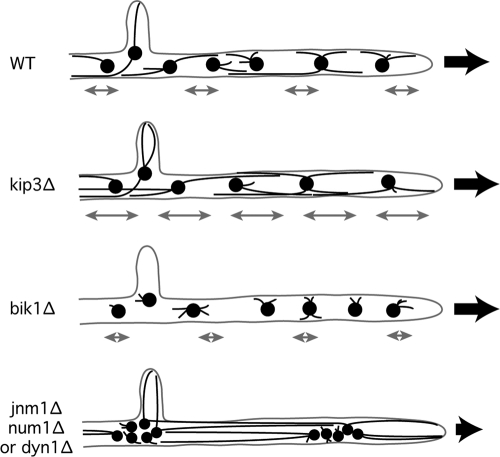Fig. 8.
The absence of oscillation and the presence of very long cMTs observed in dynein/dynactin mutants are responsible for nuclear clustering. In the kip3Δ mutant, cMTs are slightly longer than those in the WT and induce more frequent nuclear oscillations and higher oscillation amplitudes (see gray double arrows). In bik1Δ, cMTs are much shorter than those in the wild type. Nuclear dynamics is significantly decreased in this mutant (8). In the jnm1Δ, num1Δ, or dyn1Δ mutant, MTs are also longer than those in the WT, but since dynein activity is abolished, no oscillations are observed. MTs push nuclei apart and prevent their progression within the hyphae. The black arrows illustrate the direction of cell growth and of the cytoplasmic stream responsible for the passive forward nuclear movements. A reduced number of cMTs emerging from each SPB is shown in this figure for reasons of clarity.

